用户使用移动设备付款时,一项主要优势就是能够查看 交易详细信息Google 钱包提供了直观的界面,让用户可以查看其交易记录。详细的收据包含代理机构名称和徽标,以及 用户进行交易的位置地图。如果代理机构使用费用上限, 丰富收据可能也会显示最终结算的摘要。
显示公交触碰地图的位置
Google 钱包利用地图帮助用户更好地了解他们的公交行程。通过 系统会根据用户点按的位置向他们提供可视的位置记录。
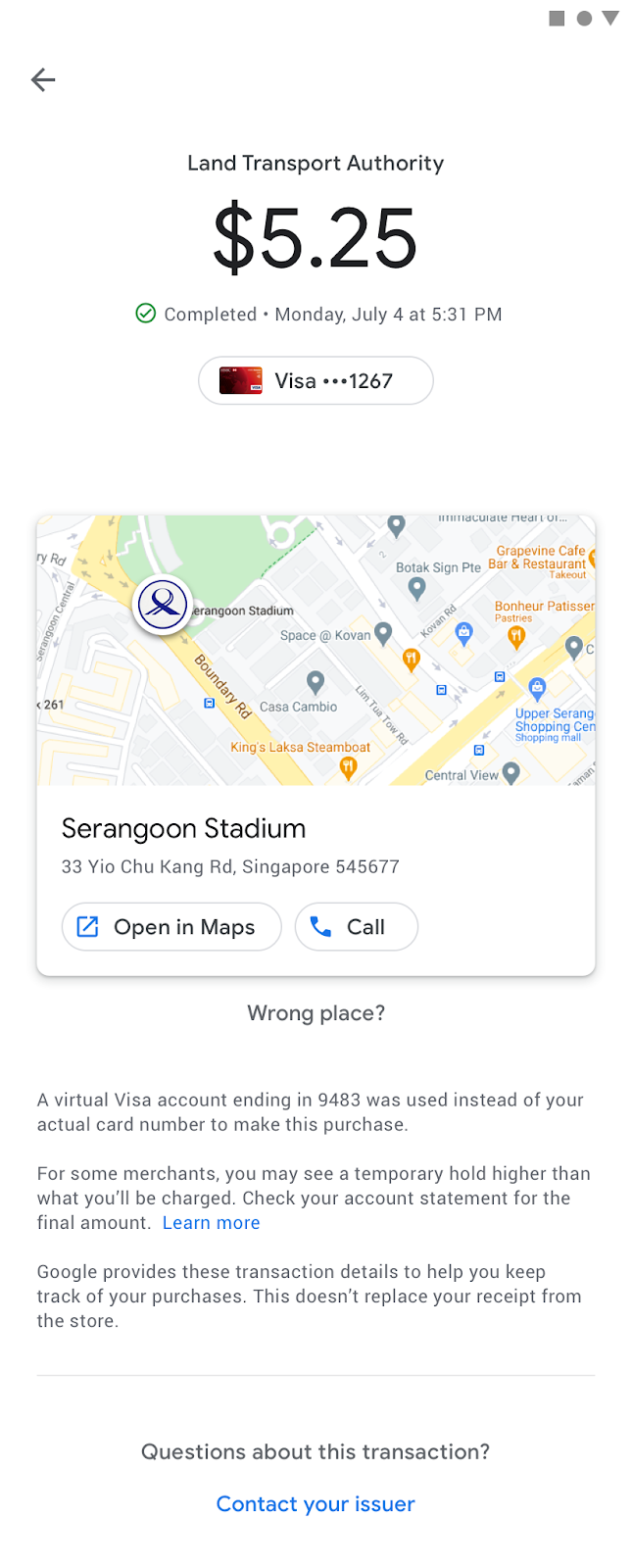

您可以通过以下两种方式生成地图:
-
使用基于点按数据的精确电台。这是首选方法。
公交终端会在您轻触时将相应车站信息传递给手机。它使用 标记来传递信息。这可提供绝对置信度, 特定终端进行触碰付款
如需详细了解如何实现此方法,请参阅 “商家名称和车站”的增强功能设置部分和 “终端上的 MCC 设置。”
-
使用根据 GPS 推断的电台。
在这种情况下,公交终端在点按中没有任何特定于车站的信息。 它将没有任何电台特定信息传递给手机。
Google 仍可使用其他终端和手机数据来推断用户点按的位置。如果置信度较高,Google 会显示地图和车站名称。
不过,在人口密集的区域、地下或多条线路重叠的地方,这种推理不太可靠。
如需启用此功能,请参阅增强型功能设置部分中的“商家名称”和“终端上的 MCC 设置”。
在设置上限费率时进行汇总
部分公交公司已实施上限费率。这通常意味着,当用户乘车时,只有在首次点按时才会完成预授权。这样做是为了验证该卡是否安全 状态。然后,用户可以继续乘车,而公交公司会在后端累计行程。
在计费上限期结束(通常是当天结束)时,公交公司会计算最终费用。届时,公交公司会将最终金额 结算交易。这意味着,用户将看到与单次结算日相关的多次点按。
如果只进行一次每日结算,用户可能无法确定自己实际支付了多少费用,以及哪些行程与该结算相关。为解决此问题,Google 钱包开发了收据汇总功能。收据总览将与单笔结算相关的所有点按合并为一笔交易 向用户显示的信息此汇总会全天进行,但不含价格,然后在最终价格确定后进行更新。
存在预授权扣款时,首次点按时的收据行为
在首次点按时,如果产生了预授权费用,则应用中会显示以下内容:
- 在该应用内,相应点按操作会在交易记录中显示为“待处理”。
- 预授权没有推送通知。
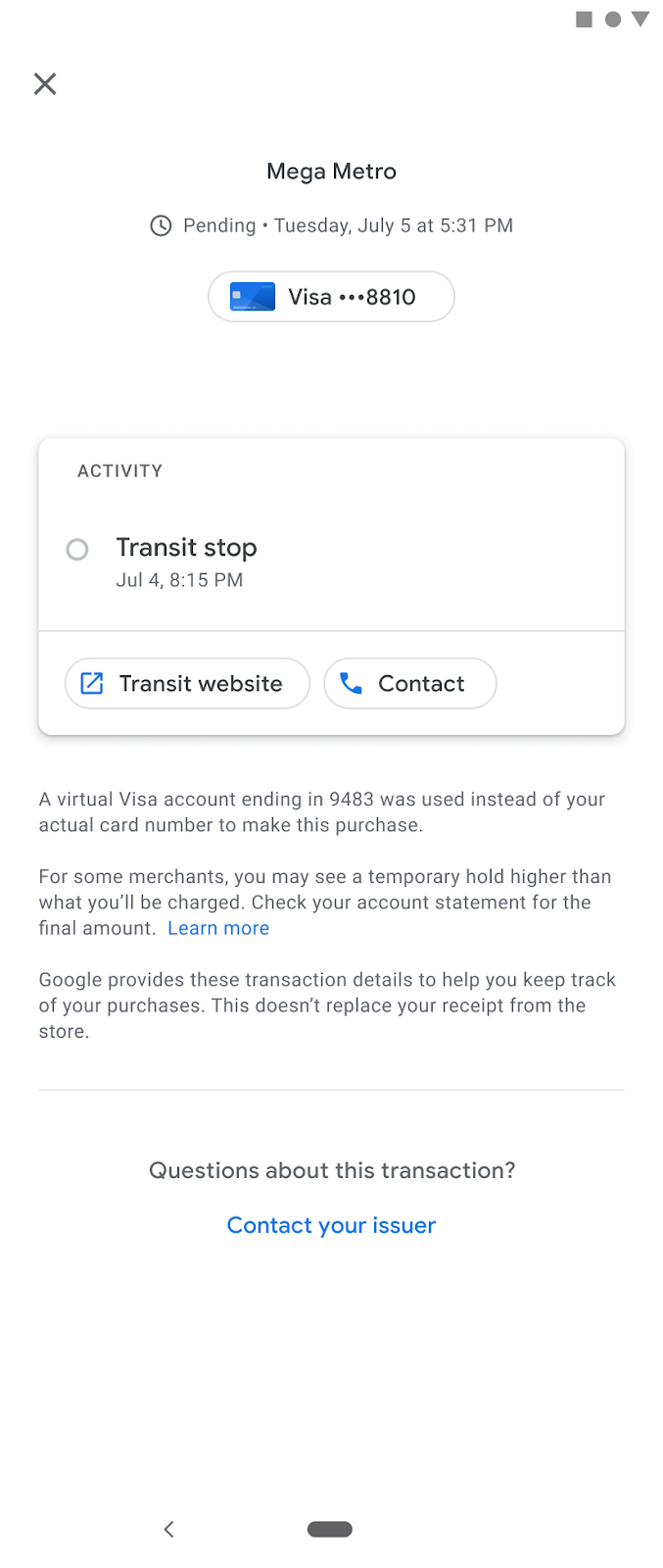

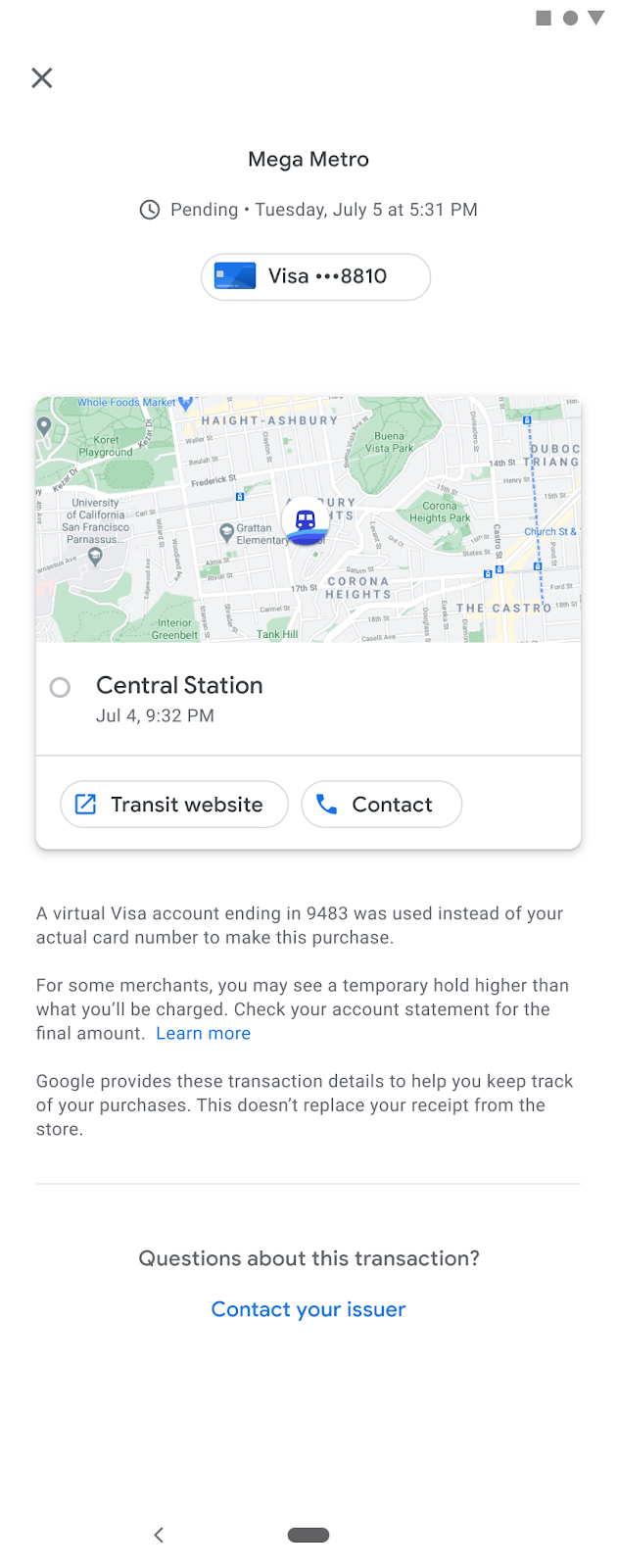

在最终结算时,会发生以下情况:
- 当我们收到交易的更新结算信息(需要使用相同的交易和预授权标识符)时,我们会使用最终收取的金额更新交易。
- 在应用中,我们会更新交易记录,并将金额从“待处理”更改为最终金额。
- 如果公交公司提供了计算票价上限的业务逻辑, Google 会将所有关联的感应式付款合并到最终结算金额中。这样做是为了向用户展示 合并交易收据。
-
预授权金额显示为“待处理”。
许多公交公司会在首次感应时进行预授权,以验证卡片是否有效,并出于风险控制目的。但是,这种预授权金额不是最终金额。例如, 设备可能只要求预授权金额是一笔最低费用,例如 0.01 美元。
当用户看到预授权金额扣款时,可能会感到困惑并致电客户支持团队。 为避免出现这种情况,Google 钱包不会在交易中显示预授权金额 表格。
-
系统不会针对预授权交易发送推送通知。
许多公交终端都定期在线,因为它们使用的是 离线设备身份验证 (ODA)。这些终端的响应时间可能会比点按操作晚得多。
如果用户认为自己的卡遭到盗用,可能会感到困惑,并致电客户支持团队 而产生的费用。当终端无法进行感应式付款时,可能会发生这种情况, 稍后上线,并在数小时后向用户发送推送通知 点按。有关详情,请参阅 增强功能设置部分。
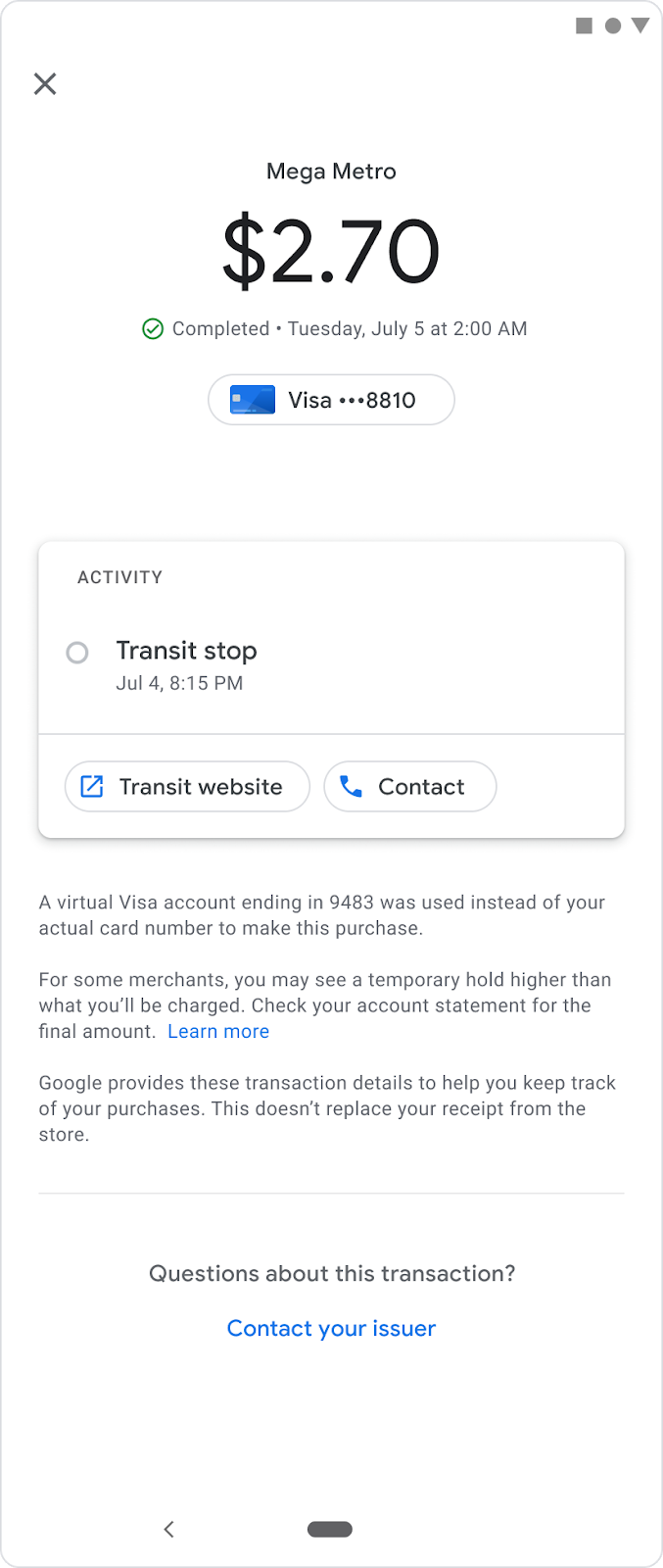

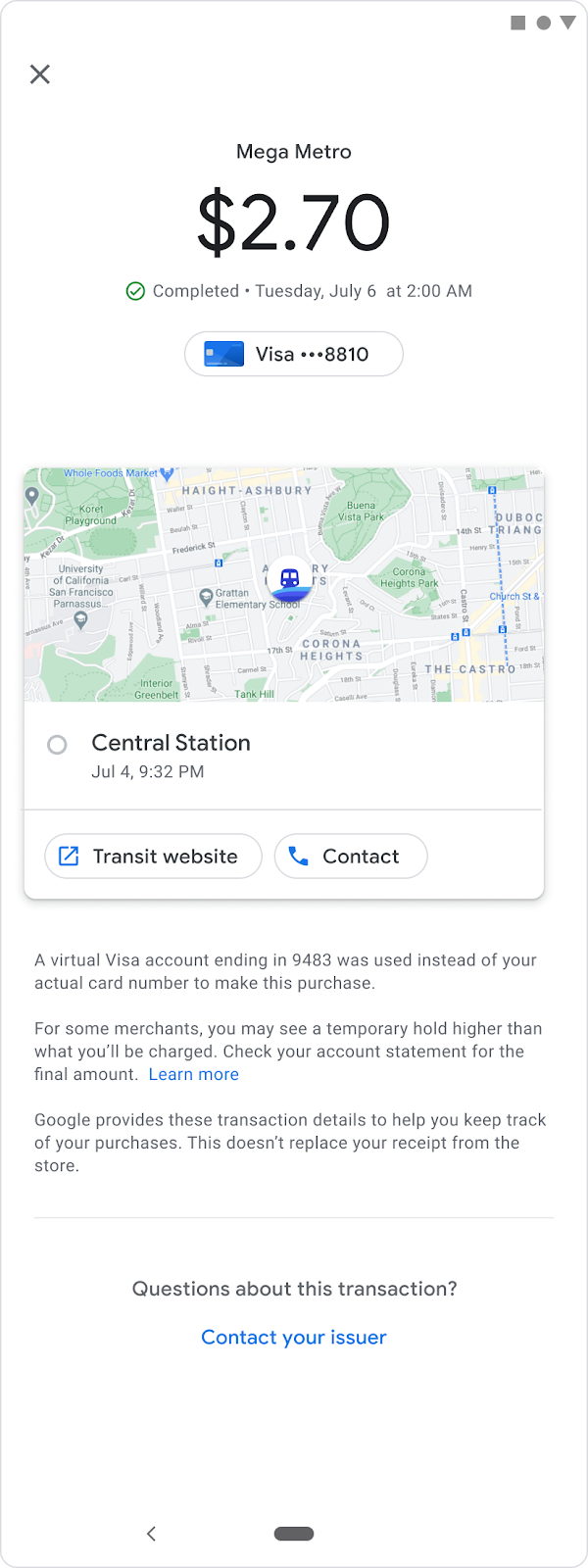

应用中会显示以下内容:
代理机构名称和徽标
为了帮助用户了解他们的交易地点,最好是查看代理机构名称和代理机构名称。 徽标。
如需启用此功能,公交公司或代表需要填写在 Google 上展示品牌特征的权限表单,以上传其徽标并向 Google 授予展示该徽标的权限。

